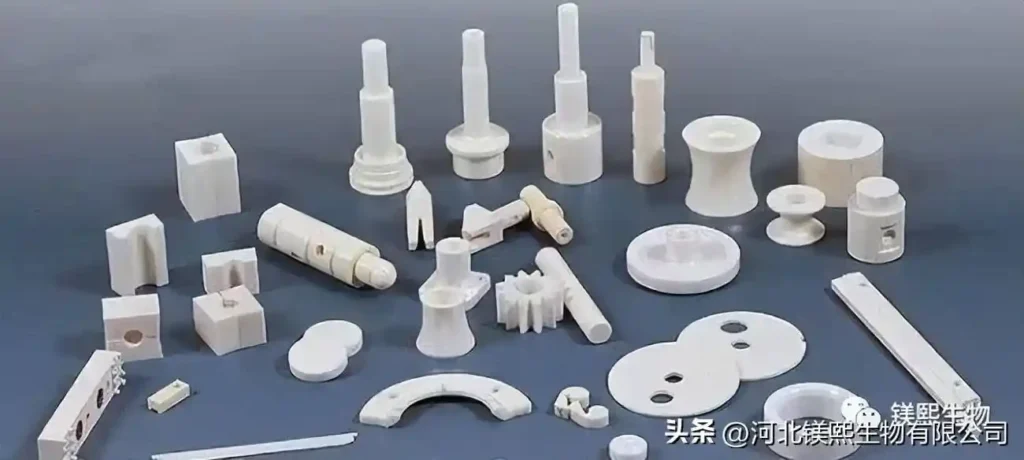Nano-magnesium oxide, with its unique physical and chemical properties, such as high specific surface area, excellent thermal stability and chemical stability, makes nano-magnesium oxide an additive for enhancing the performance of structural ceramics. Messi Biology will deeply explore the enhancement mechanism of nano-magnesium oxide in structural ceramics, and elaborate on it from the aspects of microstructure regulation, interface interaction, mechanical property improvement and high temperature stability.

1. Microstructure regulation of nano-magnesium oxide
The performance of structural ceramics depends largely on its microstructure, including grain size, phase composition, porosity and distribution. The introduction of nano-magnesium oxide can significantly refine the grain size of the ceramic matrix. During the sintering process, nano-magnesium oxide particles as crystal nuclei promote the nucleation and growth process of ceramics, effectively inhibit the abnormal growth of grains, and thus obtain a more dense and uniform microstructure. In addition, the high surface energy of nanoparticles also promotes liquid phase sintering, accelerates the transmission and diffusion of materials, and further improves the density of ceramics.
2. Strengthening of interface interaction
The interface between nano-magnesium oxide and the ceramic matrix is one of the key factors determining the performance of composite materials. At the nanoscale, magnesium oxide particles and ceramic matrix form a large number of interfacial phases, which not only increase the interfacial area of the material, but also strengthen the interfacial bonding force through chemical bonding, physical adsorption and other methods. The atomic arrangement at the interface is chaotic, and there are a large number of unsaturated bonds and dangling bonds. These defects become “hot spots” for energy storage and transfer, which helps to improve the strength and toughness of the material. At the same time, the stress transfer at the interface is more uniform, which effectively alleviates the influence of concentrated stress and prevents the expansion of cracks.
3. Significant improvement in mechanical properties
The introduction of nano-magnesium oxide has a significant effect on the mechanical properties of structural ceramics. First, the fine grain strengthening effect brought about by grain refinement is the direct reason for improving the strength of ceramics. Smaller grains mean more grain boundaries, and the grain boundaries have an enhanced barrier effect on dislocations, thereby improving the yield strength and tensile strength of the material. Secondly, the role of interface strengthening cannot be ignored. The strengthened interface reduces the crack source and changes the crack propagation path, so that the crack needs to consume more energy during the propagation process, thereby improving the fracture toughness of the material. In addition, nano-magnesium oxide may further improve the mechanical properties of ceramics through mechanisms such as phase transformation toughening and residual stress toughening.
4. Improvement of high-temperature stability
The application of structural ceramics in high-temperature environments places strict requirements on their stability. The addition of nano-magnesium oxide effectively improves the high-temperature stability of ceramics. On the one hand, the high specific surface area and rich surface defects of nanoparticles provide a fast channel for oxygen diffusion, promote the oxidation kinetics of ceramics at high temperatures, help form a stable oxide protective layer, and slow down the further oxidation of the matrix. On the other hand, the phase change that may occur in nano-magnesium oxide at high temperatures (such as from cubic phase to hexagonal phase) can absorb or release energy, which plays a positive role in relieving thermal stress and inhibiting crack propagation. In addition, the uniform distribution of nanoparticles also helps to improve the thermal conductivity of ceramics and reduce the occurrence of thermal stress concentration.
In summary, nano-magnesium oxide significantly enhances the comprehensive performance of structural ceramics through multiple mechanisms such as microstructure regulation, strengthening of interface interactions, significant improvement of mechanical properties, and improvement of high-temperature stability.
